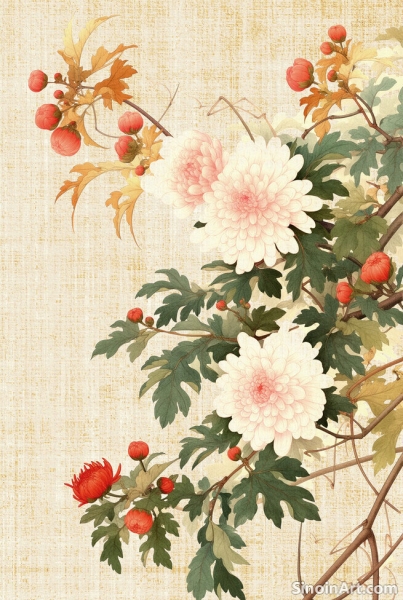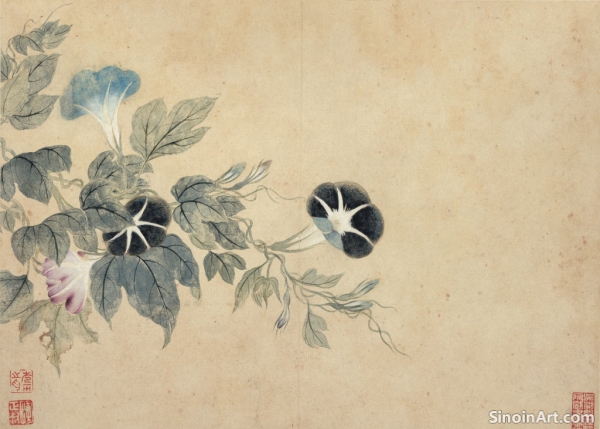Gongbi Color Palettes: From Traditional Pigments to Modern Hues
|
The vibrant and nuanced colors of Gongbi painting are a hallmark of the style, reflecting the artist's mastery of pigments and their understanding of color theory. Traditionally, Gongbi artists relied on natural pigments derived from minerals, plants, and other organic sources, carefully preparing and applying them to create a range of subtle and luminous hues. These traditional palettes are the basis for much of the Gongbi art known today.  The traditional color palette includes pigments such as malachite green, azurite blue, cinnabar red, and ochre yellow, each offering a unique color and texture. These pigments are carefully ground and mixed with water and a binding agent, often animal glue, to create a paint that is both vibrant and stable. The preparation of these pigments is a crucial step in the painting process and requires skill and precision.  The layering technique used in Gongbi painting allows artists to create subtle variations in color and tone. Thin washes of color are applied one after another, gradually building up the depth and luminosity of the image. This process requires patience and precision, as each layer must be carefully applied to achieve the desired effect. It is not about painting one layer, but a multitude of layers that merge to create beauty.  While traditional pigments continue to be highly valued, modern Gongbi artists are also exploring the use of synthetic pigments and new techniques. This allows for an expanded range of color and greater flexibility in artistic expression. The blending of old and new is part of how traditional methods can be kept relevant and interesting. The choice of color in Gongbi painting is not merely aesthetic; it is also deeply symbolic. Colors often carry specific cultural connotations, with red representing good luck, yellow representing royalty, and blue representing tranquility, among many others. These symbolic choices enrich the meaning of the painting. The artist therefore needs to master both color application, and its symbolic meaning. |
Tag : Gongbi color, Chinese art pigments, traditional painting palette, color layering techniques, color symbolism in art
Related information
- Gongbi Painting and its Relationship to Song Dynasty Aesthetics
- The Influence of Western Art on Contemporary Gongbi Painting
- Gongbi Painting and the Depiction of Auspicious Symbols
- Gongbi Painting and Storytelling: Narrative Through Detail
- Brushstrokes of Precision: The Techniques of Gongbi
This article explores the relationship between Gongbi painting and the aesthetic principles of the Song Dynasty, highlighting its influence on the art form's emphasis on realism, detail, subject matter, symbolism, and overall artistic vision.
This article explores the influence of Western art on contemporary Gongbi painting, highlighting the adoption of new perspectives, compositions, materials, techniques, and themes, and how these influences have created a unique hybrid style.
This article explores the use of auspicious symbols in Gongbi painting, highlighting the meaning and cultural significance of these motifs, and how their depiction in these detailed works expresses wishes for good fortune, prosperity, and happiness.
Explores the narrative power of Gongbi painting, highlighting its ability to tell stories through detail, symbolism, and historical or mythological depictions.
This article delves into the specific techniques of Gongbi painting, focusing on the outlining method, color application, detailed depiction, traditional materials, and the discipline required for mastery.